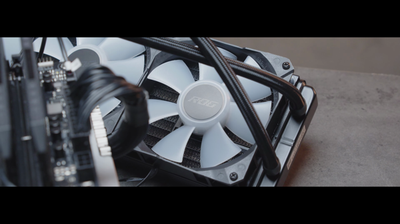
My use of the ASUS ROG Strix LC II 360 ARGB AIO Cooler (2024)
My thoughts on the ASUS ROG Strix LC II 360 ARGB: design elegance, cooling prowess, ease of setup, and long-term value.
Introduction
I recently upgraded my PC with the ASUS ROG Strix LC II 360 ARGB CPU cooler. This cooler turned out to be a solid mix of performance and aesthetics. I'll elaborate below on how it performs under load and its overall value.
Some photos (click to enlarge)
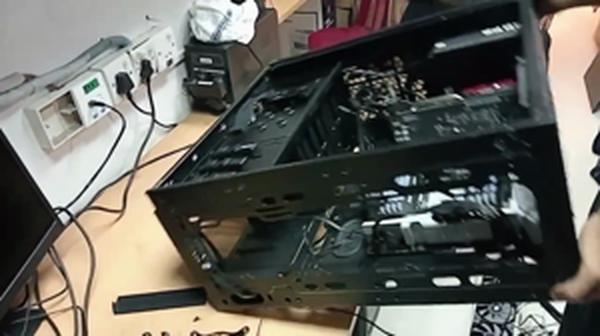
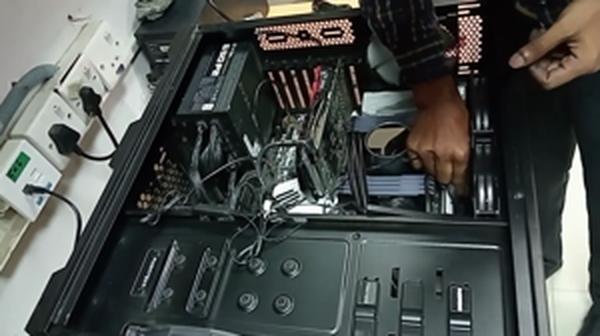
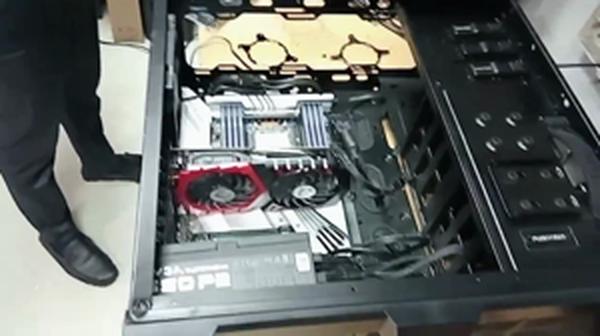
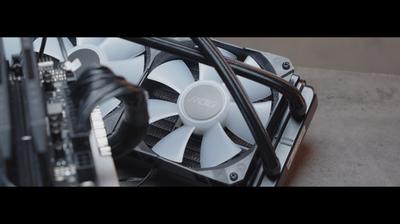
Specs of the ASUS ROG Strix LC II 360 ARGB AIO Cooler
- Release Year
- Brand
- Compatible Devices
- Maximum Rotational Speed
- Noise Level
- Power Connector Type
- Product Dimensions
- Voltage
- Wattage
Prices
Design and Aesthetics: Building a Visual Symphony
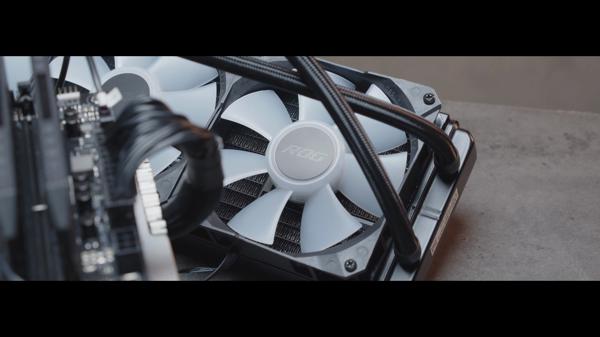
When it came to picking a CPU cooler for my build, the ASUS ROG Strix LC II 360 ARGB caught my eye immediately. Its aesthetics are spot-on for RGB fans who appreciate a visually appealing setup. The white finish on the radiator, paired with ARGB fans, casts a mesmerizing glow that really brings the whole PC build to life. It sets up a visual symphony that harmoniously integrates with other components, especially if you're routing for a themed build.
Here's a quick rundown of what I dig about its design:
ARGB Fans: They're the main attraction. The vibrant, customizable colors add a ton of personality to the setup.
Sleek Pump Design: The NCVM-coating pump head with the ROG logo is not only a signature touch but also a statement piece for the build.
White Radiator: A unique touch that distinguishes it from the usual black radiators, adding a contrasting element to the case interior.
Reinforced Tubing: Not just for durability but also visually cleaner than plain rubber hoses. It elevates the aesthetics considerably.
But let's not shy away from the drawbacks. For instance, the beautiful ROG logo on the pump head can be a letdown if you prefer a different orientation and it can't be rotated. It's a small gripe for some, but for others with a keen eye for detail, it could be a deal-breaker.
Moreover, while the design is clean and the build quality is commendable, it's worth noting that aesthetics are not the only benchmark for a cooler. But we are talking design here, and in that department, ASUS has put in a commendable effort with this cooler.
One thing I particularly appreciate is the compatibility with a wide range of sockets without needing to purchase separate mounts, which shows attention to both detail and customer convenience. The 360mm size means it takes center stage in any case, demanding and deserving attention.
Still, this isn't just about the looks. The cooler's design is also practically beneficial. The reinforced, sleeved tubing is not only stylish but promotes durability. And the RGB? Well, it's all about personal taste, isn't it? For builders who want performance and a show-stopping look, those LEDs are more than just pretty lights; they're an integral part of the build's identity.
To sum up, in the context of design and aesthetics, the ASUS ROG Strix LC II 360 ARGB is a head-turner. The thoughtful design elements and RGB flair cater to builders who want their rigs to not just work great, but look outstanding. Sure, you might pay a premium for the ROG brand and its accompanying bling, but if you value aesthetics as much as performance, it's a price worth considering.
Performance and Cooling Efficiency under Load

When it comes to under load performance and cooling efficiency, I lean mostly positive with the ASUS ROG Strix LC II 360 ARGB. This AIO cooler has been put through its paces in my build, and I've observed several key points:
The Seventh Gen Asetek pump maintains low noise levels while keeping my overclocked CPU temperatures in check. Even when I revved up my gaming sessions or heavy workloads, I was pleasantly surprised by the cooler's performance.
The ARGB fans are not just for show; they do an excellent job at optimizing airflow and maintaining static pressure, which is crucial when you're pushing your system to the limits.
Despite its sleek looks and performance chops, the pump orientation can be an issue if you're particular about aesthetics and don't mount it the standard way. It's a little hiccup in design if your OCD ticks for symmetry or proper logo placement.
Some users might find the lack of noise-isolating pads on the fans a drawback, as they might generate noticeable sound when the system is under full load.
Here's a summary of what I've found:
Pros:
Robust cooling performance under load.
Low operational noise from the pump.
Quality build with high-end Asetek technology.
ARGB fans provide both aesthetics and efficient cooling.
Cons:
Pump orientation can be an issue for some build layouts.
The fans might be noisier under full load without noise isolation.
It's clear that ASUS has targeted enthusiasts who want to push their systems while keeping them cool and looking good. I'm quite impressed with how this cooler manages heat dissipation under severe workloads. For instance, while gaming or rendering videos, the temperature readings have been nothing short of admirable.
However, it's not without its faults. The logo orientation issue is minor but could be frustrating for some. I'm also on the fence about the fan noise; it's not deal-breaking, but I've heard quieter setups. I suppose if you're after top-tier cooling, a bit of noise is a small price to pay, especially when considering the thermal performance on offer.
For those deeply invested in the ASUS ecosystem, the synchronization with other ROG components could add to the appeal. The fact that the cooler includes a broad range of CPU socket support right out of the box is a bonus, something that should be standard but somehow isn't with all coolers.
In short, while the ASUS ROG Strix LC II 360 ARGB isn't flawless, it's a solid performer with head-turning looks. If you can live with the minor drawbacks - which, frankly, are overshadowed by the cooling prowess - it's a worthy addition to any high-performance setup.
Installation and Compatibility with Various Sockets

When it comes to installing a CPU cooler, the compatibility factor plays a crucial role in the decision-making process. Speaking from experience, the ASUS ROG Strix LC II 360 ARGB comes across as a versatile and generally user-friendly option. One of its standout features is the wide range of CPU socket support. Here's a quick breakdown:
AMD: AM4, TR4
Intel: LGA 1700, 1200, 115x, 1366, 2011, 2011-3, 2066
For someone who prefers not to fuss over buying additional mounts, it's refreshing to see include compatibility with the newer LGA 1700 socket right out of the box.
Although the installation process is designed to be as smooth as possible, it's not without its occasional hiccups. The provided instructions are clear enough, but I highly recommend having a video tutorial on standby, especially if you're new to the AIO liquid cooler game.
One of the perks I appreciate is the reinforced, sleeved tubing which not only ensures durability but also adds to the clean look once installed. However, the mounting hardware did feel a bit on the lighter side. It's not a deal-breaker, considering the temperatures stay well within a comfortable range, but a more robust bracket system would add to the peace of mind.
The 360mm radiator fits nicely in cases that can accommodate it, but you'll want to double-check your case dimensions. The 5.55"L x 18.27"W x 9.06"H size is substantial and may be too large for compact cases. Also, despite its visual appeal, if you're mounting the pump in a non-standard orientation, be prepared for the ROG logo to test your aesthetic tolerance as it won't be aligned.
In summary, the ASUS ROG Strix LC II 360 ARGB isn't perfect, but its installation process is straightforward, and its broad socket support is a big plus:
Pros:
Broad socket compatibility
No additional mounts required for LGA 1700
Straightforward installation with clear instructions
Durable and aesthetically pleasing sleeved tubing
Cons:
Mounting hardware could be sturdier
Size may not fit all cases
Pump logo orientation may be a minor annoyance
For those who are invested in building a PC that not only performs well but also looks the part, this AIO cooler is certainly worth considering. Just be prepared for the potential need to finesse it into place and possibly overlooking the minor flaw of the logo's orientation.
Longevity and Overall Value: Is it Worth the Investment

When it comes down to it, the ASUS ROG Strix LC II 360 ARGB has been a solid performer in my rig. It's like that reassuring friend who sees you through countless gaming sessions and intensive workloads. But, is it worth the investment for that added longevity and bling to your setup? Here's my breakdown:
Positives:
High cooling efficiency: My CPU temps stay well below the red zone even under heavy loads.
Visually stunning: The ARGB makes the inside of my case look like a high-end tech showcase.
Broad compatibility: It fits a range of sockets, so I'm not boxed into one motherboard manufacturer.
Areas to Consider:
There's a premium for aesthetics and brand. If you don't care for RGB, you could arguably get similar cooling performance for less.
The fans can get noisy under duress, something to keep in mind for those seeking a silent build.
From a personal stance, balancing longevity and cost is key. This cooler seems to be built to last with its reinforced tubing and a robust Asetek pump, but you are forking out extra for the ARGB features. If you're not a fan of ASUS' software, you might feel like you're paying for something that's not entirely needed, even though the hardware prowess on its own is striking.
For me, it's all about creating a build that has both guts and glory. While the LC II 360 hits the high notes on maintenance-free longevity and a visual punch, I admit that part of the investment goes towards the aesthetic that ASUS has nailed with this product. In terms of raw cooling performance, it keeps up with its competitors, but it won't magically transform your rig into a supercomputer.
On the balance sheet of cooling versus cost, if you're looking for high performance without the RGB flair, there are alternatives out there that might suit your wallet better. Yet, in the realm of ROG components, if you're vested in the ecosystem, this cooler's integration and appearance may justify the splurge.
Would I recommend this to fellow builders? If you appreciate the cohesive look of ROG products and plan to make the ARGB shine, absolutely. If cooling efficiency is your sole pursuit, consider your options, but keep in mind this cooler's robust build and performance. It’s not just about cooling; it’s about doing it with style, and on that front, ASUS doesn't disappoint.
Comments (0)
Share